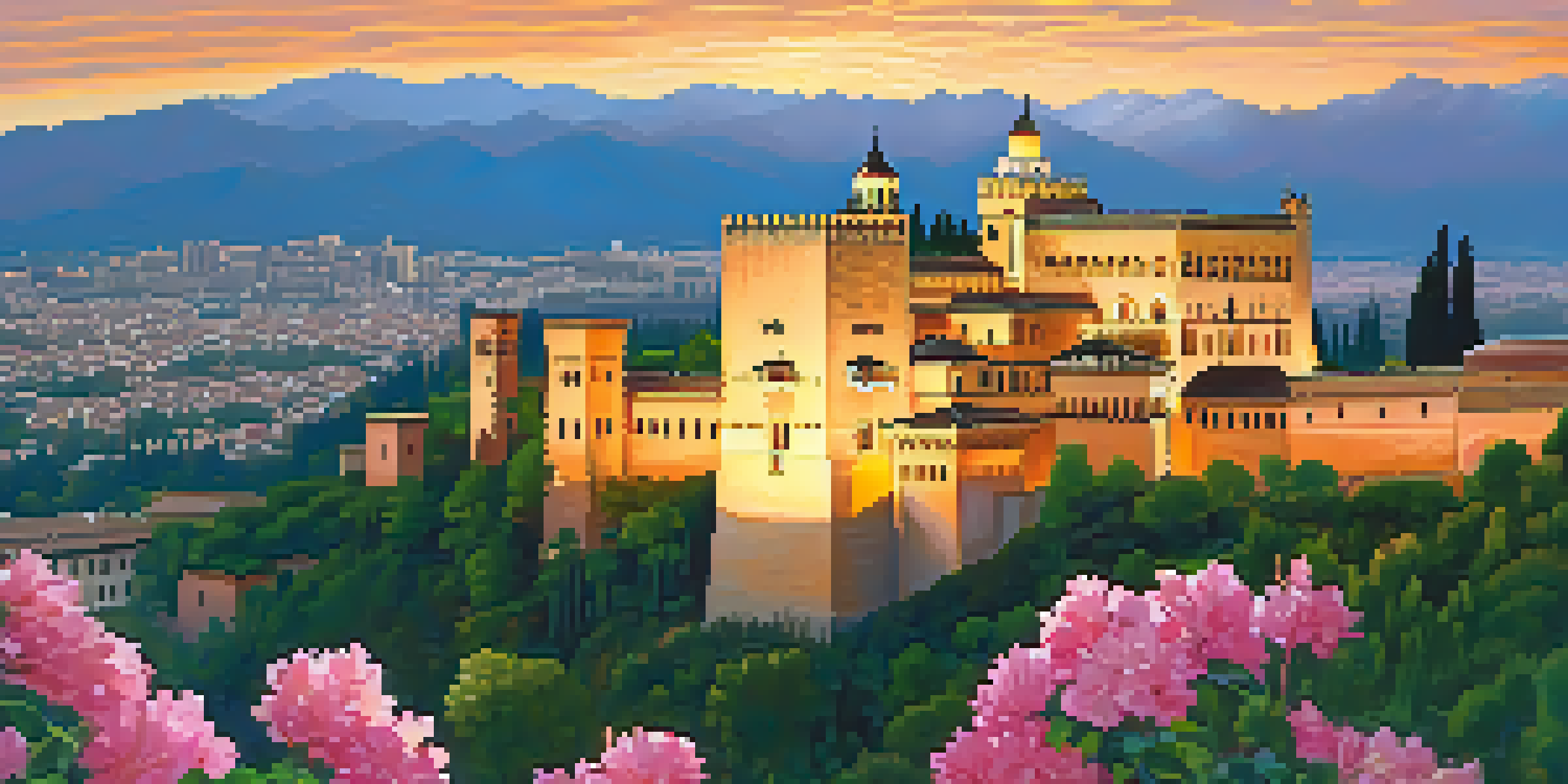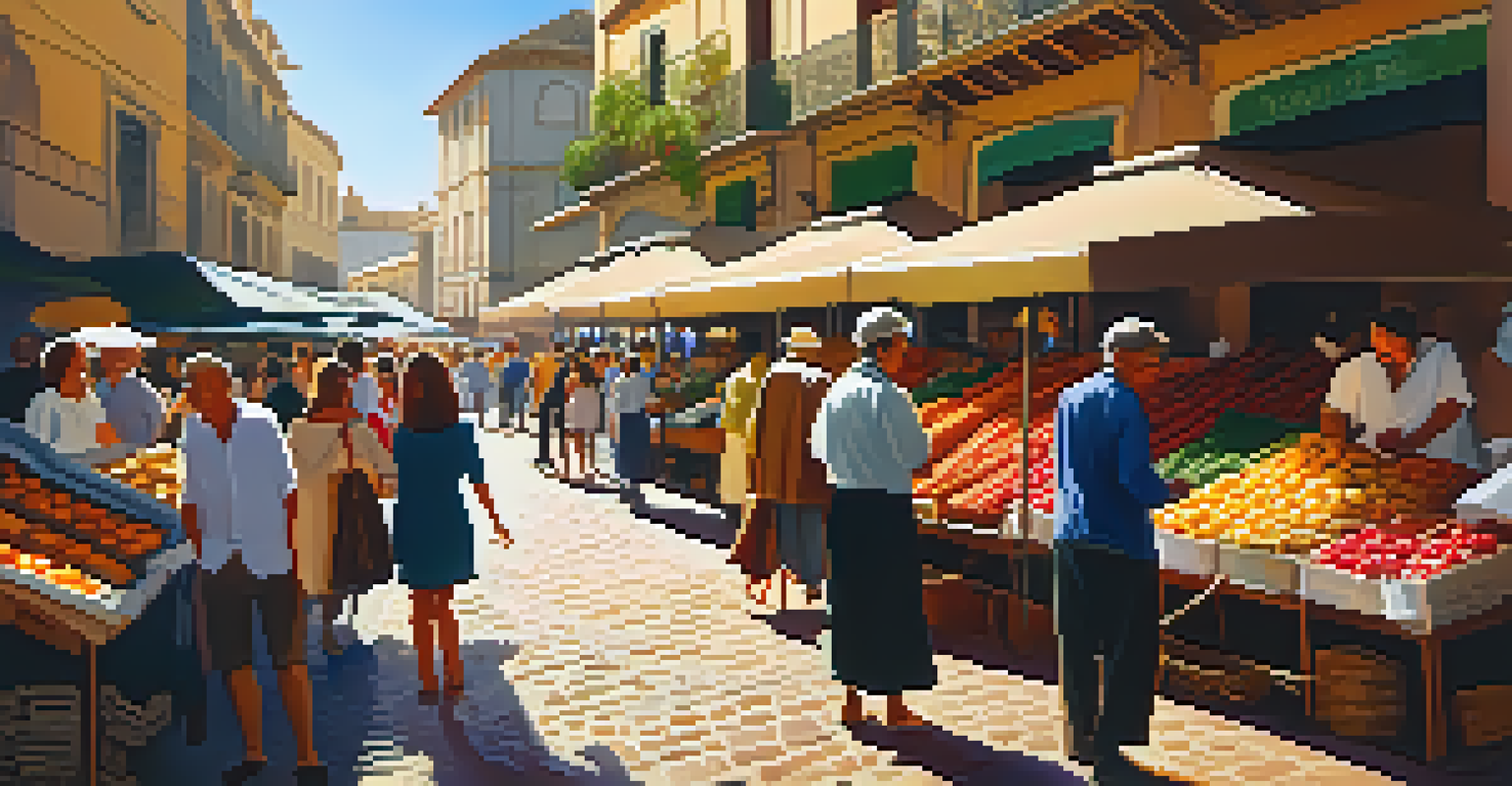A Journey Through Time: Guided Trails of Spanish Heritage

The Roots of Spanish Heritage: An Overview
Spanish heritage is a vibrant tapestry woven from centuries of history, culture, and influence. It encompasses everything from art and architecture to traditions and language, reflecting the diverse regions of Spain. Understanding these roots is essential for appreciating the guided trails that bring this heritage to life.
The journey of a thousand miles begins with one step.
These trails often trace paths taken by explorers, artists, and everyday people, showcasing the evolution of Spanish culture through the ages. By walking these routes, you can immerse yourself in stories that shaped not only Spain but also the world around it. Each step you take is a step through history, connecting you to the past.
As you embark on these journeys, you’ll encounter landmarks, monuments, and local customs that offer a glimpse into the rich narrative of Spanish heritage. It's not just about the sights; it's about the stories and experiences that make these trails truly special.
Exploring Iconic Spanish Cities on Guided Trails
Cities like Seville, Barcelona, and Granada are renowned for their stunning architecture and historical significance. Guided trails in these urban centers allow travelers to explore iconic landmarks such as the Alhambra or the Sagrada Familia. Each site tells a unique story, revealing layers of history that span centuries.

Walking through the streets of these cities, you can appreciate the blend of Moorish, Gothic, and Renaissance influences that define Spanish architecture. These guided tours often include local guides who share personal anecdotes and insights, enhancing your understanding of the cultural context behind each landmark.
Heritage Trails Connect History
Guided heritage trails allow travelers to immerse themselves in Spain's rich history, exploring landmarks and stories that shaped the culture.
Beyond the famous attractions, these trails also lead you to lesser-known gems, like quaint plazas and local markets. These hidden spots provide a more intimate glimpse into daily life and traditions, enriching your journey through Spain's vibrant heritage.
Nature and Heritage: Trails Through Spanish Landscapes
Spain's diverse landscapes—from the rugged mountains of the Pyrenees to the serene beaches of the Costa del Sol—offer stunning backdrops for guided heritage trails. These routes not only showcase natural beauty but also highlight the deep connection between the land and Spanish culture. Nature plays a vital role in shaping traditions, cuisine, and even festivals.
To travel is to live.
For example, trails in regions like La Rioja invite you to explore vineyards that have been cultivated for generations, where wine-making is an integral part of local heritage. As you walk through the rows of grapevines, you can learn about the methods passed down through families, making your experience both scenic and educational.
Moreover, these trails often integrate elements of local flora and fauna, providing insight into how nature has influenced Spanish life. Whether it's hiking through national parks or strolling along coastal paths, you're bound to discover how deeply intertwined Spain's heritage is with its natural landscapes.
Culinary Trails: A Taste of Spanish Heritage
No journey through Spanish heritage would be complete without indulging in its rich culinary traditions. Guided culinary trails offer a delicious way to connect with the culture, as you sample regional specialties and learn about the history behind each dish. From tapas to paella, every meal tells a story.
As you explore local markets and participate in cooking classes, you gain insight into the ingredients and techniques that define Spanish cuisine. Understanding the significance of items like olive oil or saffron can deepen your appreciation for the food. Plus, cooking alongside locals creates a memorable cultural exchange.
Culinary Experiences Enrich Culture
Culinary trails offer a delicious gateway to Spanish heritage, showcasing regional specialties and fostering community through shared meals.
These culinary experiences often culminate in communal meals, allowing you to savor the flavors while sharing stories and laughter. This sense of community is a reflection of Spanish culture, where food is not just nourishment but a means of bringing people together.
Art and Architecture: The Essence of Spanish Heritage
Spanish heritage is profoundly represented through its art and architecture, which can be explored on various guided trails. From the surreal works of Salvador Dalí to the intricate designs of Antoni Gaudí, art in Spain is a celebration of creativity and innovation. Each piece reflects the cultural nuances of its time.
Walking through art districts or visiting museums on a guided tour allows you to appreciate these masterpieces in their historical context. Local guides often share fascinating stories about the artists, their inspirations, and the societal influences that shaped their work. This context enriches your understanding of each artwork.
Architectural wonders, such as Gothic cathedrals or Moorish palaces, further illustrate the diversity of Spanish heritage. As you explore these structures, you’ll learn about the techniques and materials that define them, gaining a deeper appreciation for the craftsmanship involved in creating such enduring legacies.
Festivals and Traditions: Celebrating Spanish Heritage
Spanish festivals are a vibrant expression of cultural heritage, often celebrated with great enthusiasm and community spirit. Guided trails during these events allow you to witness age-old traditions, from flamenco dancing in Seville to the running of the bulls in Pamplona. Each festival showcases unique customs that have been preserved through generations.
Participating in these festivities provides an immersive experience, as you engage with locals and learn about the significance of each celebration. Many trails offer insights into the history of these events, revealing how they have evolved over time while remaining rooted in tradition.
Local Communities Enhance Travel
Engaging with local communities during guided trails provides a personal perspective on traditions and their significance in contemporary Spanish life.
Whether it’s tasting traditional foods, joining in a dance, or simply soaking up the atmosphere, these guided trails during festivals present an unforgettable opportunity to connect with Spanish heritage in a lively and dynamic setting.
Connecting with Local Communities on Heritage Trails
One of the most enriching aspects of guided trails is the chance to connect with local communities and learn from their experiences. These interactions provide a personal touch to your journey, as you hear firsthand accounts of life, traditions, and the impact of history on their daily lives. It's a reminder that heritage is not just about the past but also about the present.
Many trails include visits to local artisans, farmers, or historians who share their crafts and knowledge. This exchange fosters a deeper understanding of what it means to be part of Spanish culture today, as you see how traditions are upheld and adapted in modern times.

By engaging with local communities, you contribute to the preservation of these traditions, supporting sustainable tourism that benefits everyone involved. It’s a beautiful symbiosis that enriches your travel experience while honoring the heritage you’re exploring.